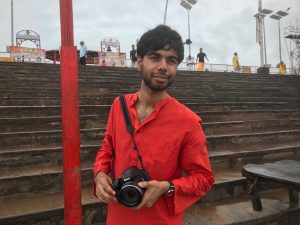This is part of series of posts by recipients of the 2019 Career Services Summer Funding Grant. We’ve asked funding recipients to reflect on their summer experiences and talk about the industries in which they spent their summer. You can read the entire series here.
This entry is by Shubhan Nagendra, COL ’20
 This summer I worked at Civil Society, an independent magazine specializing in the reporting of grassroot organizations around India. They focus on issues of community development and problems in marginalized areas of society around India. This focus fascinated me, given that coverage of such issues is lacking in the mainstream media. Added to this, quite often, their stories combine history with current community and politics.
This summer I worked at Civil Society, an independent magazine specializing in the reporting of grassroot organizations around India. They focus on issues of community development and problems in marginalized areas of society around India. This focus fascinated me, given that coverage of such issues is lacking in the mainstream media. Added to this, quite often, their stories combine history with current community and politics.
This was the case for me for this summer. They tasked me to focus on a historically important geographical district of Delhi called the Nizamuddin Basti. It is approximately 700 years old with the Sufi shrine of Nizamuddin Auliya taking the center of the community. It is said that people used to bury their relatives around the shrine in the hope of meeting the Sufi saint in afterlife. This probably explains why later princes and kings in the Mughal period of India were buried there. All this led to the creation of a vibrant community around the shrine with the building of homes. This is why later historical personages such as the celebrated poets Amir Khusrow and Mirza Ghalib are also buried there.
This district has a historical, cultural, and spiritual charm. Yet, over subsequent years, it fell into disrepair. It became a dumping ground for trash. People grew sick quickly. Schools lacked teachers. That is why about twenty years ago, the Aga Khan Trust for Culture within the larger umbrella group of the Aga Khan Foundation began revitalizing the community. Their goal has been to restore the Basti to its past glory culturally, educationally, and health-wise.
This is where Civil Society wanted me to focus, as they knew my interests in history, India, and architecture would coincide well with the work of AKTC in Nizamuddin Basti. Indeed, this was quite true. Walking through the Basti, I could see the various landmarks, from the Humayun’s Tomb to the Sunder Nursery and Ghalib’s Tomb, working themselves through the narrow lanes and a densely populated center.
As I learned, these landmarks were all restored. The calligraphy, for instance, in the Humayun’s Tomb was cleaner. The dome of the tomb went through repairs. In the Basti, where the people lived, AKTC worked with families in health education and in keeping attendance mandatory as well as data recording health records.

For me, it was heartening to see this community work in Delhi. This is a city where I was born and lived for ten years before immigrating to America, and so as a child I had never seen this form of community development. In that sense, this was an opportunity for me to step away from the news in both international and domestic media about communal tensions between Hindus and Muslims to see engagement and work.
Yet, my trip would not have been fulfilled without seeing the spots where these communal tensions are reportedly occurring. So, I travelled in the so-called “UP Belt,” from Lucknow to Ayodhya to Varanasi. These are cities in the politically crucially region of Uttar Pradesh with Varanasi being Indian Prime Minister Narendra Modi’s constituency. The goal here was to document through photography and meet community members by talking to Hindus and Muslims about Hindu nationalism.
These experiences helped me form further ideas on how I could shape my time after university. Given I study history, I realize I would be interested in learning about the impact of colonialism among post-colonial societies such as India. Countries like India are still emerging economies where both conflicts and development exist. In this trip, I found it fulfilling to see the latter.




